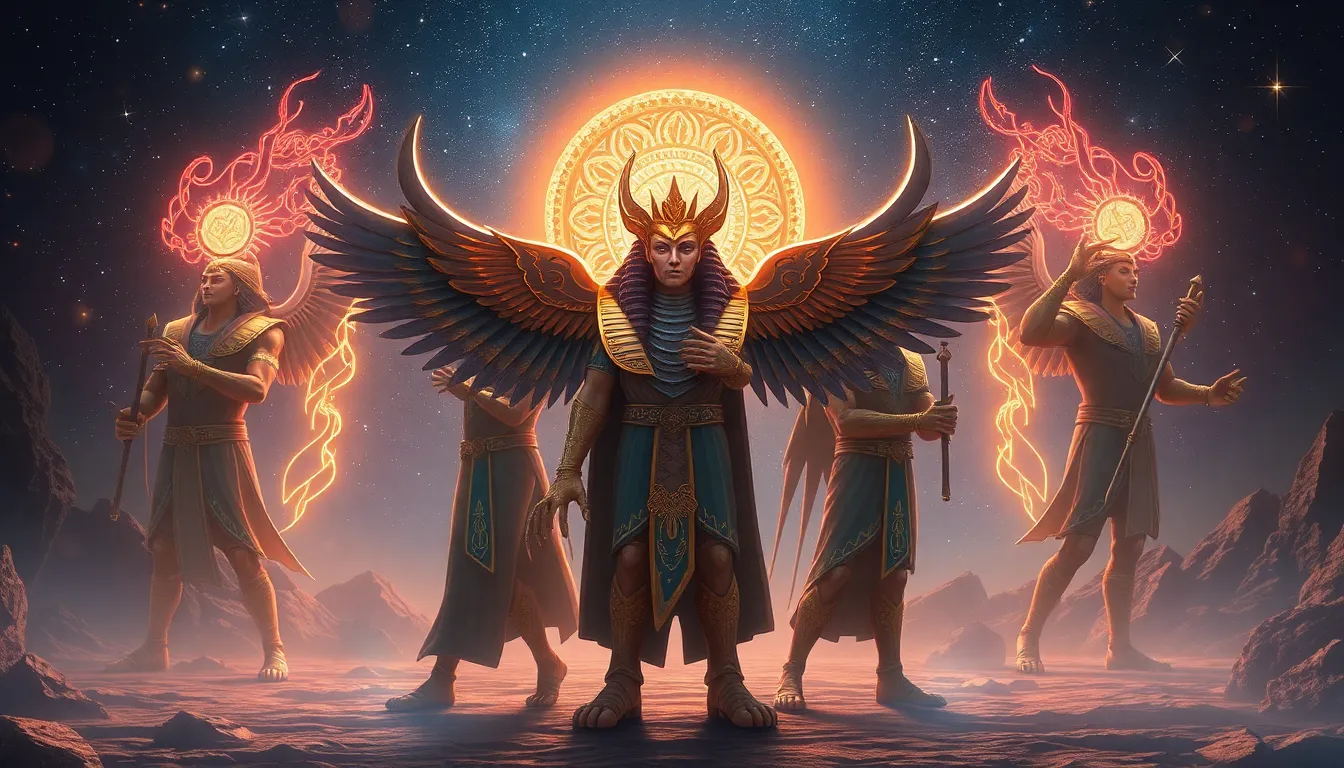The Myths of the Celestial Guardians: Egyptian Legends Reimagined
I. Introduction
Egyptian mythology is a rich tapestry of stories that have fascinated people for centuries. It encompasses a wide range of deities, myths, and beliefs that were central to the ancient Egyptians’ understanding of their world. Among these elements, celestial guardians play a significant role, representing the forces of the cosmos and their influence on human life. This article aims to explore the myths surrounding these celestial guardians and reimagine them within a modern context.
II. The Celestial Guardians: Who Are They?
Celestial guardians in Egyptian mythology are divine beings associated with the heavens, often depicted as protectors and guides for humanity. They embody various celestial bodies and their movements, signifying the connection between the divine and the mortal realms.
Key figures among the celestial guardians include:
- Horus: The sky god, often represented as a falcon, who symbolizes kingship and protection.
- Thoth: The god of wisdom and writing, often depicted as an ibis or baboon, associated with the moon and knowledge.
- Isis: The goddess of magic and motherhood, revered for her protective qualities and her role in the afterlife.
The symbolism of celestial bodies, such as the sun, moon, and stars, is deeply ingrained in these myths. The sun, represented by Ra, signifies life and creation, while the moon represents time and the cyclical nature of existence.
III. Common Myths Surrounding Celestial Guardians
The myths surrounding celestial guardians often delve into themes of creation, protection, and the afterlife.
- The Creation Myths: Many Egyptian creation myths involve celestial guardians. For instance, in the Heliopolitan creation story, Atum, the sun god, created the first gods and the world from chaos.
- Protection in the Afterlife: Celestial guardians, such as Anubis and Osiris, guide souls through the afterlife, ensuring safe passage and judgment.
- Misinterpretations: Popular culture often misrepresents these myths, leading to a simplified or distorted understanding of their significance. For instance, many portrayals of Egyptian gods lack the depth of their attributes and roles.
IV. Reimagining the Legends: Contemporary Interpretations
Modern storytelling has the power to reshape ancient myths, breathing new life into the tales of celestial guardians.
Influences of literature, film, and art include:
- Literature: Authors like Rick Riordan in the “Kane Chronicles” series introduce readers to Egyptian mythology through engaging narratives that reinterpret the roles of gods.
- Film: Movies such as “Gods of Egypt” create visually stunning representations of these deities, though they often take creative liberties with the source material.
- Art: Contemporary artists incorporate symbols and figures from Egyptian mythology into modern works, blending ancient and current themes.
Reimagined characters in modern media can lead to a rediscovery of the depth and complexity of these celestial figures, inviting new audiences to appreciate their stories.
V. The Role of Celestial Guardians in Modern Spirituality
There has been a resurgence of interest in ancient Egyptian spirituality in recent years, with many seeking to connect with the wisdom of the past. Celestial guardians play a significant role in this exploration.
Contemporary practices include:
- Invocations: Many modern spiritual practitioners invoke celestial guardians in rituals seeking protection, guidance, and enlightenment.
- Blending Beliefs: Individuals often blend ancient wisdom with current spiritual practices, creating unique belief systems that honor both old and new traditions.
VI. The Legacy of Egyptian Celestial Guardians
The legends of Egyptian celestial guardians have left an indelible mark on Western culture, influencing literature, art, and spirituality.
Comparison with other mythologies reveals:
- Similar celestial figures exist in other cultures, such as the Greek gods who represent various aspects of nature and humanity.
- Many mythologies feature guardians of the afterlife, showcasing a universal theme of protection and guidance.
The lessons learned from these myths often revolve around the importance of balance, harmony, and the connection between the earthly and celestial realms.
VII. Debunking Myths: What’s Fact and What’s Fiction?
Understanding Egyptian mythology requires critical thinking to separate fact from fiction.
- Origins of Misconceptions: Many misconceptions arise from a lack of understanding of the context in which these myths were created.
- Historical Evidence: Archaeological findings provide insights into the beliefs and practices of ancient Egyptians, often contradicting popular narratives.
- Importance of Critical Thinking: Engaging with these myths critically allows for a deeper appreciation and understanding of their true significance.
VIII. Conclusion
The celestial guardians of Egyptian mythology hold a profound significance that continues to resonate in today’s world. Their stories reflect the ancient Egyptians’ understanding of the cosmos and their place within it. As we explore and reimagine these legends, we gain insight into the timeless themes of protection, guidance, and the interconnectedness of life. We invite readers to delve deeper into these ancient myths, appreciating their richness and relevance in our contemporary lives.




